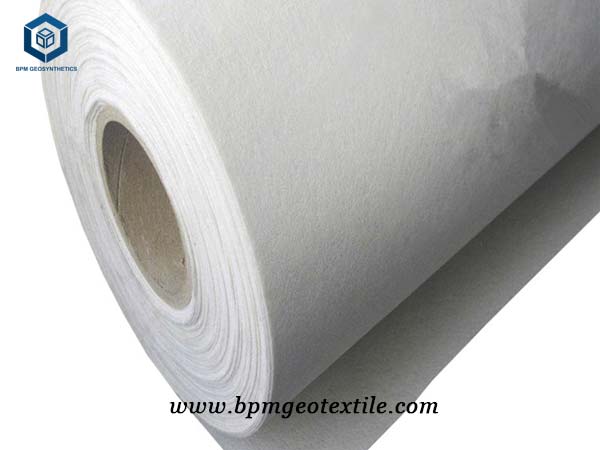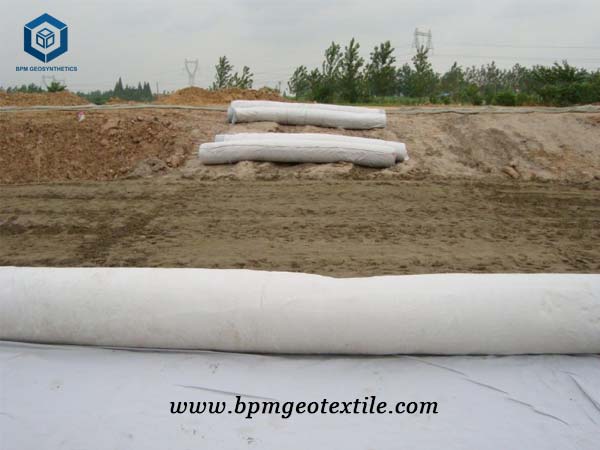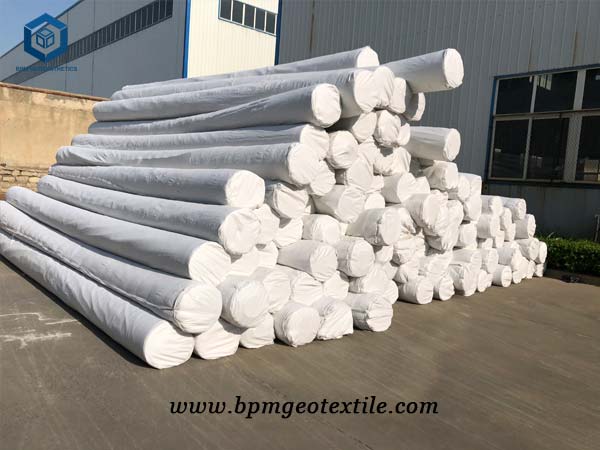Non Woven Geotechnical Fabric for Road Reinforcement in Australia
Non woven geotechnical fabric, also called geotextile fabric, is often made with polypropylene or polyester fibers processed by woven, needle-punched or heat-bonded methods which is widely used to increase ground support and soil stabilization in a given location. Geotechnical fabric is the ideal geosynthetic materials to strengthen the isolation and protection of the foundation. Geotechnical fabric has a permeability coefficient comparable to that of coarse sand. On the one hand, if they are not clogged, they can maintain a good effect of each segment of capillary. On the other hand, the hydrophilicity ratio of geotechnical fabric is lower than the soil, so that the capillary rise height can be reduced. Therefore, non woven geotechnical fabric is an indisputable fact that the geotechnical fabric can play a major role to reinforce the foundation.
Our Australia customer got a tender for road Reinforcement project in February 2018. They needed nonwoven geotextile to act as the basement to protect roadbed and sub groundwater drainage. The required quantity of geotechnical fabric is more than 20,000 square meters. After we got the requirements from our customer and then we sent our geotechnical fabric advantages and function and laying process with no any hesitation. And we recommended them our 300gsm short fiber needle punched geotextile fabric which can cover about 23,800sqm by one full 40HQ container. They asked for geotextile samples from us for their lab test, then they confirmed the quality and after that order of 23,800sqm. In the following three months, more quantity of nonwoven geotextile will be required and we will be responsible for their supply.
Specifications of Geotechnical Fabric for Road Reinforcement in Australia
- Total Geotextile Quantity – 23,800 m2
- Each roll size 5.8m*50m
- One 40HQ container
The Advantages of Non Woven Geotechnical Fabric for Road Reinforcement
- Light weight, good overall continuity, high tensile strength, corrosion resistance, good anti-microbial erosion and easy construction.
- The pore diameter is small; the permeability is good, the geotechnical fabric is soft and the soil is well-integrated.
Non Woven Geotechnical Fabric Installation Considerations
(1) Paved according to the full width of the embankment.
(2) Leave enough anchorage length on each side of the embankment.
(3) In order to ensure integrity, the overlap length should be 0.3-0.5m when the overlap method is used continuously. When sewing, the bonding width is not less than 50mm.
(4) In the site construction, the damaged material must be repaired immediately. The upper and lower seams should be alternately staggered not less than 0.5m.
(5)Try to avoid prolonged exposure and exposure.
(2) Leave enough anchorage length on each side of the embankment.
(3) In order to ensure integrity, the overlap length should be 0.3-0.5m when the overlap method is used continuously. When sewing, the bonding width is not less than 50mm.
(4) In the site construction, the damaged material must be repaired immediately. The upper and lower seams should be alternately staggered not less than 0.5m.
(5)Try to avoid prolonged exposure and exposure.
About BPM
BPM had provided many types of effective and states of the art geomembranes, geotextile and other geosynthetics to over 36 countries. Our main customers are from Australia, France, Sweden, UK, Hong Kong, Hungary, New Zealand, Poland, Mexico, Ecuador, Brazil, Pakistan, Bangladesh, Thailand, Vietnam, Malaysia, Indonesia, Singapore, Philippines, Sri Lanka, India, UAE, Saudi Arabia, Qatar, Kenya, Ghana, Ethiopia, Somalia, Nigeria, South Africa, Swaziland, Mongolia etc.
BPM is also providing professional design and installation service. OEM and ODM are also available. If you have any questions or inquiries, please fill and submit the following form, we will reply as soon as possible.






没有评论:
发表评论